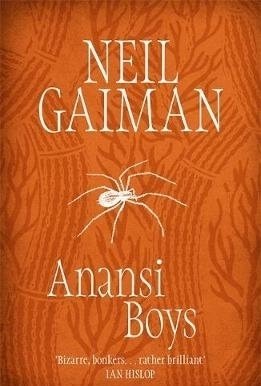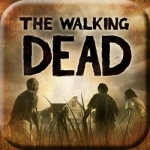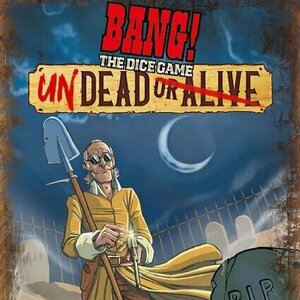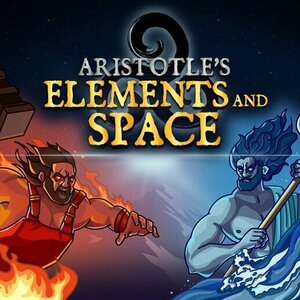
600 Celebs - Celebrity Guess Quiz
Games and Entertainment
App
You see these celebrities every day on the TV, in the movies or on the news, but can you recognize...
Gareth von Kallenbach (980 KP) rated Bendy and the Ink Machine in Video Games
Aug 14, 2019
Similar to other games with an episodic structure (e.g.: Alan Wake and Life is Strange), BatIM uses short levels to advance the story line in some intriguing ways. Love of Exploration will be your saving grace in this game, as each area requires some in order to advance to the next. The game is not fast-paced. On the contrary, it’s meant to be a slow experience for the player with sparse combat scenarios present only to add a brief moment of action. Your actions as Henry are very limited, as is his speed. With 5 chapters, the gameplay time is at just about hours, and the game uses every minute to pull you deeper into the dark world it has created.
I reviewed BatIM for the Nintendo Switch and found that the game was somewhat held back by the platform’s technical limitations. The biggest drawback I found was that textures would often blur and have jagged edges, with the shaky 30FPS frame rate just feeding fuel to this fire. This is a detriment to gaming’s purpose in keeping the players immersed in the environment. BatIM is meant to be tense, but I often found myself dispelled of the illusion due to blurry visuals and dropped frames. With a game designed so well, how unfortunate that this be its biggest flaw. Maybe this can be patched out, but we can only hope at this point.
BatIM developer, theMeatly Games, may have taken inspiration from Five Nights at Freddy’s as the gameplay and overall genre of the games are quite similar. The world is conceptualized using objects such as books and tapes found within the game instead of long cut scenes that can tend to take you out of the moment rather than add to it in games like these. As you delve deeper into the oubliette of a workshop, you’ll find that the gameplay is perfectly paired with the game’s sick and twisted visuals, proving that BatIM delivers on every level.
Bendy and the Ink Machine is available now on all major platforms.

My Life in Football
Book
When Trevor Brooking was still at school, the Essex-born teenager was one of the most eagerly...

Anansi Boys
Book
From bestselling storytelling legend Neil Gaiman, author of American Gods and The Ocean at the End...

Stroked Eagle (The Eagle Trilogy #1)
Book
Eric Birdwell | It’s all about him. It always was, and it always will be. Heartless as ever,...
Contemporary Romance
Purple Phoenix Games (2266 KP) rated Aristotle's Elements and Space in Tabletop Games
Nov 5, 2020
Aristotle’s Elements and Space is a party style card game for three to five players. Players will be attempting to play elements to triumph over their opponents by using tried and true rock-paper-scissors style play.
DISCLAIMER: We were provided a prototype copy of this game for the purposes of this review. These are preview copy components, and I do not know for sure if the final components will be any different from these shown. Also, it is not my intention to detail every rule in the game, as there are just too many. You are invited to download the rulebook, back the game through the Kickstarter campaign, or through any retailers stocking it after fulfillment. -T
To setup stock the token bag (not pictured) with tokens according to the rulebook suggestions for number of players. Each player will blindly choose three tokens from the bag to place in front of themselves within reach of all players. Shuffle the element cards and deal each player seven. Determine the first Aristotle player and place the Aristotle card facing that player. Shuffle and deal out three Element of Surprise cards face-down within reach of all players. The game may now begin!
Each game lasts seven rounds. At the start of each round players will secretly choose a card from hand to play to the table face down. Once all players are ready all players must simultaneously say out loud, “Aristotle,” while flipping over their cards. When all cards are revealed the Aristotle player will compare cards with the player on their left. Whichever element card played triumphs over the other will win that battle and continue onward clockwise to battle the other players. This continues until one player has triumphed all the cards and taken the trick. The Aristotle card is then given to the next player in clockwise seating to begin a new round. This is how a basic game is played.
More advanced games will include Power Up Tokens and the Element of Surprise Cards. In order to use a Power Up Token a player would first need to have successfully stolen another player’s token during a round of play. To successfully steal a token the player will physically take a token from another player without being touched by that player. Should the defending player touch or slap the offensive player’s hand during the theft, the heist is unsuccessful. Once stolen a token may be used on a subsequent round.
The Power Up Tokens increase the number of elements that may be triumphed using a particular element. For instance, Fire typically triumphs over Earth and Wind, but with the Power Up Token also applied the Fire triumphs over Earth, Wind, AND Water. A most welcome twist! Also, during a round in which a player is acting as Aristotle they may, once cards are revealed, call, “Element of Surprise!,” and choose a face-down card to read aloud to the group. These cards add a goofy rule that must be thenceforth followed, gives prompts for the players to discuss, or has players searching the room/house/wherever for items to bring back to the table first.
Play continues in this fashion until the last round, where triumph rules are reversed. When all cards have been played the winner is the player who won the most tricks.
Components. Again, this is a prototype version of the game. That said, what we received was a bunch of cards and the Power Up Tokens. The tokens are fine – laser cut plywood discs painted on both sides to match the elements they modify. The cards are glossy and feature unique art. The art is, well, just okay for me. It’s not terribly exciting, but it is very colorful and not bad, necessarily. I feel like the art could be improved some, but art is always a personal preference.
The gameplay itself is certainly a hodge-podge of mechanics from other games that, for the most part, are well-used for a very light trick-taking card game. I enjoy playing it using the Power Up Tokens, but for me and my group, we passed on the Element of Surprise cards. They add a different twist to the game that isn’t necessarily Quelf-ish, but also doesn’t add much to the game. They merely add a distraction from the game. I can see many people totally diggin’ those cards, and I probably would use them if converting a game-noob, but for more serious gamers, just leave them out.
If you are looking for a very light and different trick-taking card game, check out Aristotle’s Elements and Space. I am not entirely sure if any components will be updated before going to retail, but even if not, they are pretty decent. The gameplay is quick and easy to teach; I think I will try it with my 4-year-old as well. This is a decent gateway filler that could fit very well in many collections. Give it a look!

Frostpunk
Video Game Watch
"(...) this is a game about finding reasons to survive rather than just the means to go on living." ...
simulation strategy

Walking Dead: The Game
Games and Entertainment
App
**NOTE: Compatible with iPad 2 and up, and iPhone 4 and up - WILL NOT RUN ON EARLIER DEVICES** ...

BANG! The Dice Game: Undead or Alive
Tabletop Game
BANG! The Dice Game: Undead or Alive includes five "modules" for BANG! The Dice Game that can be...


